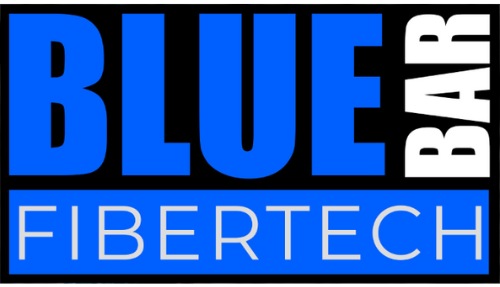Implementing micro-influencer collaborations requires more than a superficial glance at follower counts. To truly leverage their power for authentic brand growth, brands must adopt a meticulous, data-driven approach to selecting and analyzing micro-influencers. This deep-dive explores concrete, actionable strategies to identify, evaluate, and engage micro-influencers whose audiences align with your brand values and whose engagement metrics reflect genuine influence, not inflated vanity metrics.
Table of Contents
Analyzing Audience Alignment and Engagement Metrics
The cornerstone of selecting authentic micro-influencers lies in understanding their audience. This involves a multifaceted analysis of demographic fit, behavioral engagement, and content resonance. Here’s a step-by-step method:
- Obtain Audience Demographics: Use tools like Influence.co or Heepsy to analyze age, gender, location, and interests. Cross-reference these with your target customer profile. For example, if your brand targets eco-conscious urban millennials, ensure the influencer’s audience demographics heavily skew towards this segment.
- Assess Engagement Rate: Calculate engagement rate as
(Total Engagements / Total Followers) x 100. Prioritize influencers with engagement rates above 3% for micro-influencers, which indicates active, interested followers rather than inflated vanity metrics. Use platforms like Iconosquare or native Instagram analytics for accuracy. - Qualitative Engagement Analysis: Review comments and shares to gauge conversation quality. Authentic influencers often have comments that reflect genuine interest, such as detailed feedback or questions, rather than generic emojis or spam.
- Audience Overlap and Sentiment: Use tools like Followerwonk or Brandwatch to analyze audience overlap between influencers and your existing customers. Analyze sentiment via comment tone to ensure the audience’s perception aligns positively with your brand values.
Expert Tip: Never rely solely on follower counts. A micro-influencer with 10,000 highly engaged followers can outperform one with 50,000 disengaged followers. Prioritize genuine interaction over raw numbers for authentic growth.
Utilizing Niche-Specific Platforms and Tools for Identification
While Instagram and TikTok are primary platforms, niche communities often thrive on specialized platforms and directories that facilitate precise micro-influencer discovery. Implement the following tactics:
- Leverage Niche Platforms: Use platforms like Tribe for lifestyle influencers, Sociable for sustainable brands, or LikeToKnow.it for fashion. These platforms curate influencers around specific verticals, simplifying quality filtering.
- Utilize Advanced Search Tools: Employ NinjaOutreach or BuzzSumo to filter influencers by niche keywords, engagement metrics, and audience demographics. Create custom filters tailored to your brand’s target profile.
- Analyze Content Relevance: Use keyword searches and hashtag analysis to identify micro-influencers who consistently produce content aligned with your industry. For instance, a fitness brand should look for influencers frequently posting workout routines with hashtags like #fitfam or #healthyhabits.
- Monitor Emerging Trends: Track niche-specific forums, Reddit communities, or Facebook groups where micro-influencers share authentic content. This often uncovers hidden gems not yet saturated in mainstream influencer databases.
Pro Advice: Combining niche-specific tools with social listening yields a more comprehensive view of potential influencers, enabling you to identify those with genuine authority and a loyal following.
Conducting Competitor Benchmarking to Discover Untapped Micro-Influencers
Analyzing your competitors’ micro-influencer collaborations can reveal valuable opportunities. Here’s an actionable framework for effective benchmarking:
| Step | Action | Details |
|---|---|---|
| 1 | Identify Competitors | Select brands with similar target audiences and product lines. |
| 2 | Analyze Influencer Partnerships | Use tools like Heepsy or manual social media audits to identify influencers they’ve tagged or collaborated with. |
| 3 | Evaluate Engagement Metrics | Assess influencer engagement rates, comment quality, and audience demographics, similar to your target profile. |
| 4 | Identify Untapped Influencers | Find influencers with low saturation but high engagement, indicating potential for authentic partnership. |
Key Insight: Competitor benchmarking is not about copying but about discovering unique influencers who align with your brand values yet operate outside your direct competitors’ radar, enabling authentic differentiation.
Conclusion: Building a Robust, Authentic Micro-Influencer Ecosystem
The process of selecting and analyzing micro-influencers for authentic brand growth is inherently meticulous but immensely rewarding. By applying rigorous audience analysis, leveraging niche platforms, and conducting strategic competitor benchmarking, brands can identify influencers whose followers genuinely resonate with your messaging. These steps help prevent common pitfalls like fake engagement or overly promotional content, ensuring collaborations foster trust and loyalty over the long term.
As you refine your influencer selection process, remember that authenticity is the currency of modern marketing. Deep data insights combined with genuine relationship-building lay the foundation for influencer partnerships that not only amplify your reach but also bolster your brand’s credibility and customer trust. For a broader understanding of how these strategies fit into the overall brand ecosystem, explore our comprehensive guide on Tier 1 themes.
